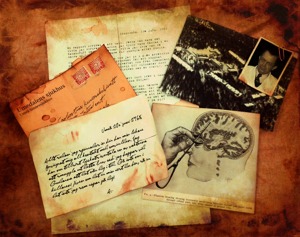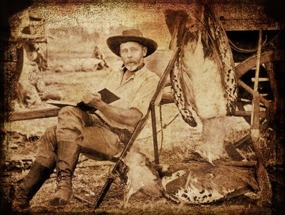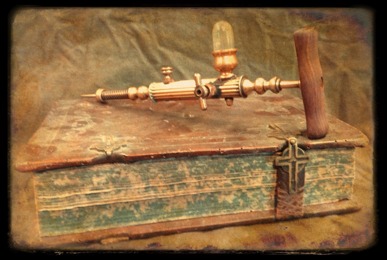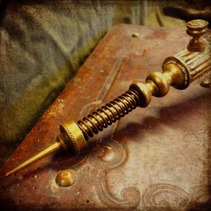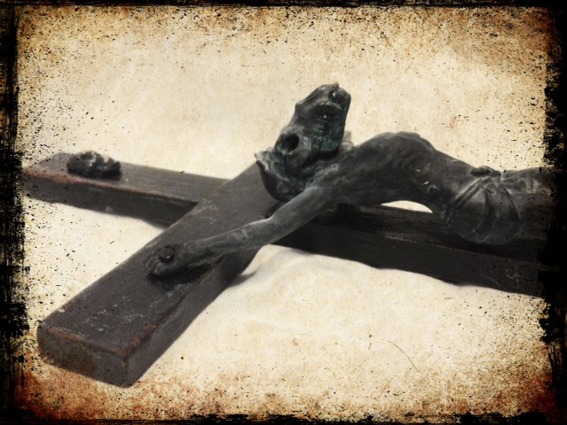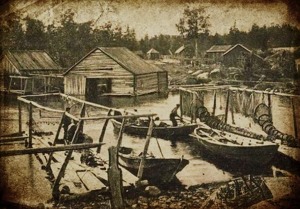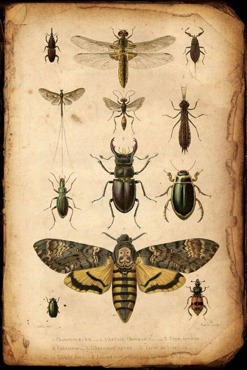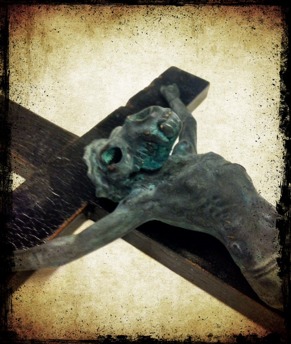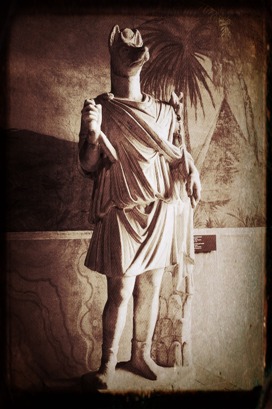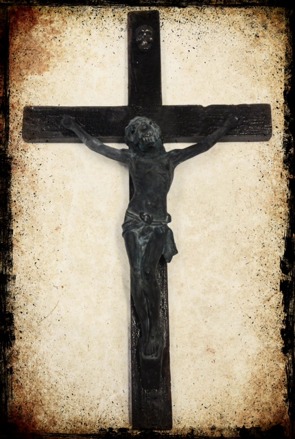2015
The strange disappearance of the Dr Cagliostro curator in 1968
On June 11th 1968 Dr Cagliostro’s Curator, known as A.M, and his assistant disappeared without a trace from their headquarters near Stockholm, Sweden. The only traces were a strange letter and a short account of the incident written by A.Ms assistant just before his own disappearance:
A report written in haste… This might be the last thing that I write, since I seem to be caught in a horrifying series of events that I can’t find any way of understanding or avoiding at this moment.
Moments ago I went into A.Ms study, only to find it empty. On his desk was an unopened letter addressed to A.M.
The envelope revealed that the letter was sent from Umedalens Insane Asylum, about 600 kilometres north of Stockholm. The address was written with a shaky handwriting that looked strangely familiar.
I opened the envelope and found a short note written in the same shaky handwriting as the address. The note read:
"During the many years they have kept me here, my doctors have denied me any contact with the outside. But finally I have persuaded one of my guards to smuggle out this letter, and I hope by the Gods that it reaches you in time. Don’t go down to the cellar! Even though you hear my voice, it isn’t me calling for you!"
The note was dated the day before the present and signed by… Me.
Failed werewolf hunter's weapon
becomes
vampire slayer.
By O.H
becomes
vampire slayer.
By O.H
This strange contraption was originally commissioned in the early 1890th by British explorer and big game hunter Frederick Courteney Selous.
Selous was convinced that several specimens of this strange creature was haunting the area north of the Transvaal region and south of the Congo Basin.
The idea was to kill this creature by injecting it with silver nitrate. For obvious reasons, trying to stab a werewolf in close range is a bad idea, and the concept was abandoned.
German vampire hunter and folklorist Max Müller however came up with the idea of using the device for injecting dormant vampires with holy water. The first field tests in the summer of 1895 was very successful, and the Holy Water Auto Injector became very popular among European vampire hunters.
The device can be loaded with about 2 CCs of liquid that can be injected in a target through a large needle. The liquid is injected by pressing the device towards the target once the needle has entered the body. This can usually be accomplished with a single stab.
Although the device has proven to be able to kill a werewolf, it has killed even more werewolf hunters.
19th Century Werewolf cult on the Swedish East Coast.
By O.H
19th Century Werewolf cult on the Swedish East Coast.
By O.H
During a police raid against smugglers in 1918 a strange artefact was found. A disturbing idol that perhaps whispers of traditions and Gods older than mans written history.
In the last years of the 19th century a strange traveller arrived at Häverö on the East Coast of Sweden. Very little is known about him, other than that he travelled from Finland and arrived in Sweden with a small freight ship in Grisslehamn. He travelled the countryside as a preacher and a colportage. He gathered a small group of followers, mostly consisting of other strange looking husky Finnish men. Their small congregation held their meetings at night-time during the new moon. The Uppsala student Johan Erik Forsström travels the area in 1801 to study the local insects.
Apart from his Entomology studies, he also writes extensive reports on local traditions and folklore. Upon his return to Uppsala, Forsström writes a private letter to Reverend Immanuel Granberg describing a strange Cult that he encountered on his excursion to the dark forests of Roslagen. Reverend Immanuel Granberg was until recently a Priest in the Häverö area, and being a prominent entomologist he has also previously exchanged many letters with Forsström. In his letter Forsström is deeply troubled about his discoveries and asks Reverend Granberg for advice on how to proceed. He describes how he encounters a drunken old sailor in Öregrund that claims to be a member of an ancient congregation that worships the true form of God. A travelling preacher that calls himself Tapio has revealed that in ancient times God, and all his angels, came to Earth from The Blue Star to fight a great war against the Giants.
In order to defeat the Giants, God and his angels had to learn to transform into wolves. A divine ability that was later passed on to humanity through angelic coalesce with humans. Tapio teaches that those who have the ability to change into wolves have the blood of angels in them, and must be worshiped. The old sailor also describes how the members of the congregation celebrates a sort of Eucharist where, instead of wine, the participants drink the blood of the preacher himself, claiming the blood to be of divine provenance. According to Forsström, the sailor also claims that certain members of the congregation, at certain times of the year, change to the shape of wolves and haunt the night in pursuit of the enemies of the congregation and of God.
We do not know if Reverend Granberg ever replied, but Forsström never returned to the dark, foreboding forests of Häverö and this is the only known written account of this strange cult.
The idea that God and his angels has shape shifting abilities can be derived from the ancient Greek poem Titanomachia (About 740 BC) where Eumelus of Corinth describes how the Olympian Gods overthrows their father Cronus and the old Gods, the Titans, in a great war. In order to defeat the Titans, the Olympians had to learn how to shift shape into wolves. This strange mix of ancient Greek and Christian mythology can also be found among some members of the Werewolf network known as The Hounds of God.
Another interesting detail in Forsström’s story is the mentioning of The Blue Star, which is a name often connected to the star Sirius, also known as The Dog Star. Many artefacts of ancient civilizations have revealed that Sirius have always been of a great importance in astronomy, religion and occultism. Many ancient civilisations associates Sirius with dog-headed creatures, like the Egyptian God Anubis or the Sumerian goddess Bau.
The crucifix was found under the floor planks of a fishing hut during a police raid against smugglers near Öregrund 1918. The officer that found it was so frightened by it, that he decided to throw it in to the sea instead of turning it in as evidence. The Crucifix remained, however, in his possession until his death in 1948 when it was donated to Dr Cagliostros Cabinet of Curiosities. The grotesque crucifix was accompanied by a written account of the raid and the strange circumstances surrounding it. The only link between the crucifix and the werewolf cult described by Forsström is the fact that the written account of the incident states that the raid interrupted a sort of ritual in a strange language, maybe Russian, and that the officers that broke down the door was almost over run by two or three large dogs that escaped the scene in to the night.
O.H
Read more about shape-shifters and werewolfes in the book Dr Cagliostros Cabinet of Curiosities, Investigations of the Unknown.
Did you know that Dr Cagliostros Cabinet of Curiosities was administrating a werewolf registration program for almost 60 years? Read about it here.




